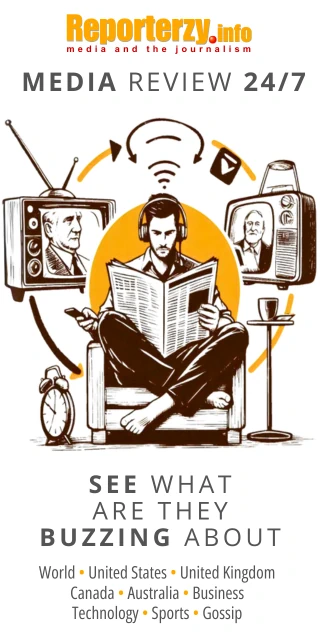 illustration: Bing AI
illustration: Bing AIThe Future of Professions: New Realities of the Job Market
In the coming years, public media will undergo dynamic changes in professions and required skills. Digital transformation accelerates the introduction of new roles that seemed unrealistic a decade ago. The report states that about 65% of children starting school today will work in jobs that do not yet exist.
- 9 million new jobs annually will be created worldwide by the green transition, with 12% in the creative sector.
- The labor market has identified 51 key skills, including 25 technological ones, such as Python programming, cloud content management, and augmented reality design.
An example is the role of data analysts, who are essential for creating personalized media content. These analyses also help target advertisements better and reduce promotional campaign costs, already implemented by many public broadcasters.zzz
Future Skills: Technology and Creativity
Digital transformation not only changes jobs but also redefines which skills will be most in demand. The report highlights the need to develop both technical and soft skills. Media professionals must combine creativity with data analysis and modern technology management.
Priority Skills:
- Data Analysis and AI: Leveraging artificial intelligence in newsrooms and analyzing audience data for content personalization.
- Creativity in the Digital World: Designing interactive experiences in VR/AR and storytelling tailored to new platforms.
- Flexibility and Adaptability: Quickly learning new tools and working in agile project teams.
An example of applying these skills is the work of virtual set designers who use XR (Extended Reality) technology to create dynamic visual spaces for TV studios.
New Professions: The Impact of Technology on the Job Market
The report shows that media transformation brings new professional roles. Content algorithm specialists and analysts monitoring AI ethics will become part of everyday newsroom operations. Already, demand for these professions in Europe is growing by about 25% annually.
New Professions in Public Media
| Profession | Required Skills | Example Activities |
|---|---|---|
| AI Specialist | Programming, data analysis | Newsroom automation |
| VR/AR Designer | Technology expertise, storytelling | Interactive entertainment programs |
| Digital Content Strategist | Content management, audience analysis | Promotional campaign optimization |
| ESG Expert | Sustainability knowledge | Green production studios |
The future of public media promises an explosion of specializations that seemed like science fiction until recently. The "Future Jobs at Public Service Media" report points to a growing demand for immersive experience designers, who will create engaging content in virtual and augmented reality. This means building spaces where viewers not only watch programs but also interact with them – from virtual museums to interactive talk shows.
The Impact of Technology on Creative Jobs (2023–2030)
| Application Area | Current Workforce | Projected Growth (%) by 2030 |
|---|---|---|
| VR/AR Content | 4,500 | 85% |
| Cloud Video Editing | 12,000 | 40% |
| Content Personalization | 6,700 | 50% |
| Metrics Analysis | 8,900 | 70% |
Green Transition and Future Leaders
One of the most interesting aspects of the report is the role of public media in the green transition. Producing content promoting sustainability and implementing eco-friendly practices in production studios is becoming a priority. For example, Norwegian public broadcaster NRK reduced CO2 emissions from its productions by 30% in three years.
Green Transition Initiatives:
- Using renewable energy in TV studios.
- Implementing carbon footprint calculation systems in production processes.
- Promoting educational content on environmental protection in children’s and youth programs.
The report also highlights changes in how media teams are managed. The growing importance of interdisciplinary projects requires a new leadership model. Leaders should not only be decision-makers but also mentors who promote innovation and support teams in adapting to evolving demands.
Example: The BBC in the UK has implemented a team-based management structure, speeding up decisions and improving collaboration between editorial and technology departments.
The full EBU and RAI report "Future Jobs at PSM: Competencies and Professions for the Media of Tomorrow" is available at:
https://www.ebu.ch/research/membersonly/report/future-jobs-at-psm
COMMERCIAL BREAK
New articles in section Media industry
Investigative journalism in Europe. Newsrooms face pressure
KFi, Newseria
Media and political representatives point to the difficult situation of investigative journalism in Europe. Newsrooms are reluctant to invest in this segment due to high costs and the large amount of time and effort required. Most of all, however, they fear legal proceedings.
Energy under attack. Disinformation threatens Poland’s power transition
KFi
One in five online messages about energy may be fake. Between 2022 and 2025 nearly 70,000 publications warning and condemning disinformation in this strategic sector were recorded in Polish media. They generated a reach of 1.19 billion impressions.
AI changes the game. A new face of internet search
KFi
Half of consumers in the US already use AI-powered search. By 2028, purchase decisions worth $750 billion will be made through AI. These findings come from McKinsey’s report "Winning in the age of AI search".
See articles on a similar topic:
How Journalists Use Social Media
Bartłomiej Dwornik
Primarily, they seek inspiration from blogs and, less frequently, from Facebook. They rarely trust what they find, often approaching it with caution. Credibility does not necessarily correlate with attractiveness.
Influencers Earn Too Much. No Fluff Jobs Report
KrzysztoF
According to nearly 70% of Poles, influencers earn too much, and 54% feel the least affection for them out of all professions. Only politicians receive equally low regard among respondents surveyed by No Fluff Jobs. On the other hand, nurses and… farmers are considered underpaid.
Online News Portal Readers in Poland. Loyalty Analysis
Bartłomiej Dwornik
Among news portals, Onet has the highest number of users. However, in terms of reader loyalty, it falls behind Wirtualna Polska. When looking specifically at news readers, Gazeta takes the lead, though it ranks poorly in Google search positioning.
User Generated Content. A minefield for journalists and media
Krzysztof Fiedorek
Over 40% of internet users judge information credibility by likes and views. Only 20% use traditional news channels as a main and first source. A Reuters Institute report highlights the scale and risks of User Generated Content and offers advice on how media can avoid falling into its trap.






























